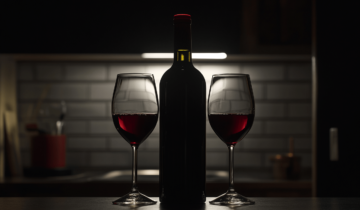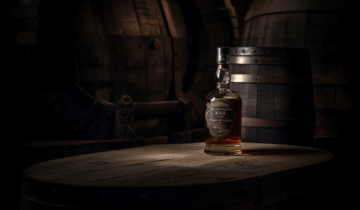As the world gears up for the annual celebration of Oktoberfest, beer enthusiasts everywhere turn their attention to the artistry of brewing. The festival, deeply rooted in centuries of tradition, is a testament to the enduring love for well-crafted beer. One of the lesser-known yet vital components of exceptional brewing is the use of oak barrels to age and refine beer, adding depth and character to every sip.
At Bochart, we believe that the beauty of barrel aging lies in the details. A process passed down through generations, the careful selection of oak and the meticulous craftsmanship of each barrel transforms beer into something extraordinary. With the right oak barrel, a brewer can unlock new dimensions of flavor, creating beers that stand out not just for their taste but for the stories they tell.
In this blog, we’ll explore the role of oak barrels in beer aging, discuss the differences between White Oak and French Oak, and provide a detailed guide on how to age beer at home using Bochart’s premium French Oak barrels—just in time for Oktoberfest.
The Role of Oak in Beer Aging
Oak barrels have long been revered for their ability to elevate the brewing process, transforming the character of beer in profound ways. “The wood is alive,” as noted by renowned brewer Michael Hofbauer, “and it imparts its life into the beer.” This interaction between oak and beer dates back centuries, with brewers in Europe and the U.S. refining the art of aging in barrels to achieve distinct flavors that are impossible to replicate in stainless steel tanks.
The porous structure of oak allows a slow oxygen exchange that mellows the beer over time, subtly reducing bitterness and adding depth to the flavor profile. For many, it’s the unique combination of natural tannins and wood sugars in oak that gives barrel-aged beer its signature complexity. According to Hofbauer, “The beer draws in vanilla, spice, and caramel from the oak, with just a hint of smokiness from the char. It’s a flavor transformation that no other aging method can achieve.”
Historically, both European and American brewers have relied on oak barrels, particularly during festival seasons like Oktoberfest, where brewers seek to highlight tradition and craftsmanship. The process of aging in oak isn’t just about flavor—it’s about preserving a brewing tradition that has been passed down through generations, with each batch of beer carrying a story of its own.
Choosing the Right Oak Barrel: French Oak vs. White Oak
When it comes to barrel aging, both French Oak and American White Oak offer distinct advantages, but French Oak stands out for its versatility and the delicate, refined flavors it imparts to beer, whiskey, and wine.
French Oak (Europe):
French Oak is highly regarded across the brewing and distilling industries, not only for its use in aging beer but also for whiskey and wine. Its tight grain structure allows for a more controlled release of tannins and wood sugars, resulting in complex, nuanced flavors that elevate the drink over time. Unlike the more aggressive flavor contributions of American White Oak, French Oak imparts subtler notes of vanilla, spices, and light floral tones, making it ideal for both short and long-term aging.
Bochart’s French Oak barrels are crafted with thick staves (up to 2.5 cm) to ensure durability and consistent quality throughout the aging process. These barrels can be reused for multiple cycles—up to 6-7 times—without compromising the flavor of the drink. The combination of craftsmanship and premium materials makes French Oak barrels an excellent choice for brewers and distillers who value subtlety and sophistication in their products.
White Oak (USA):
White Oak from the United States has its place in the world of aging, particularly for whiskey. Known for its dense wood, American White Oak allows for a slower oxygen exchange, perfect for spirits that require a longer aging period. The flavors imparted by White Oak are stronger, with more pronounced notes of caramel, vanilla, and smoke. While this can be beneficial for certain spirits, French Oak offers more refinement, making it the preferred choice for those seeking a softer, more balanced flavor profile in both beer and wine.
However, not all White Oak barrels meet the same high standards. In some regions, particularly in Mexico, barrels are made from softer oak, which lacks the durability of its American counterpart. These barrels often feature thin walls (less than 0.5 cm), making them prone to leaks. To compensate, manufacturers may line barrels with synthetic materials or apply chemical coatings, practices that interfere with the natural aging process and diminish the quality of the final product.
How to Age Beer in Oak Barrels: A Step-by-Step Guide
Aging beer in oak barrels is an art that requires patience, precision, and the right tools. By following these steps, brewers can achieve complex, flavorful beers that take on the subtle characteristics of the wood. Below is a practical guide for using Bochart’s premium French Oak barrels to age beer, just in time for Oktoberfest.
Step 1: Select Your Barrel
Choosing the right barrel is essential. Bochart’s French Oak barrels are medium charred or toasted, offering a perfect balance of flavors. The thick staves (2.5 cm) ensure a controlled, long-term aging process. Depending on the style of beer you plan to age, select a barrel size that complements your production scale and flavor goals.
Step 2: Prepare the Barrel
Before filling the barrel, it must be properly hydrated to prevent leaks. Fill the barrel with water and allow it to sit for 24-48 hours, giving the wood time to swell and seal any small gaps. After soaking, drain the water and let the barrel dry slightly, but avoid letting it dry out completely.
Step 3: Fill the Barrel with Beer
Once the barrel is prepared, it’s time to fill it with your brew. Bochart barrels are suitable for a wide range of beer styles, from stouts to lighter ales. When filling the barrel, leave a small amount of headspace (1-2 inches) to allow for the natural expansion of the beer during the aging process.
Step 4: Monitor the Aging Process
The aging period will vary depending on the type of beer and the desired flavor profile. Typically, lighter beers may only need a few weeks to absorb the oak’s flavors, while darker, more robust beers can benefit from months of aging. Check the beer’s flavor every few weeks to ensure it doesn’t over-extract tannins or become too woody. French Oak barrels, with their subtle flavor profile, allow for more flexibility and a slower flavor absorption process compared to other types of oak.
Step 5: Bottling or Kegging the Aged Beer
Once your beer has reached the desired flavor complexity, carefully transfer it to sanitized bottles or kegs for storage. French Oak barrels can be reused multiple times—up to 6-7 cycles—so be sure to clean and store the barrel properly after use. Bochart barrels are sold with an oak stand, a natural oak tap, and two plugs, allowing for easy handling and long-term storage.
Exploring Barrel-Aged Beer This Oktoberfest
As Oktoberfest draws near, consider embracing the tradition of barrel-aging beer to add depth and character to your brews. French Oak barrels, with their ability to subtly enhance flavors, offer a unique way to create something special. Whether you’re a brewer or an enthusiast, the world of barrel-aged beer is worth exploring.
Raise a glass to the craftsmanship behind the process and enjoy the rich, time-honored flavors that oak aging brings to life.







